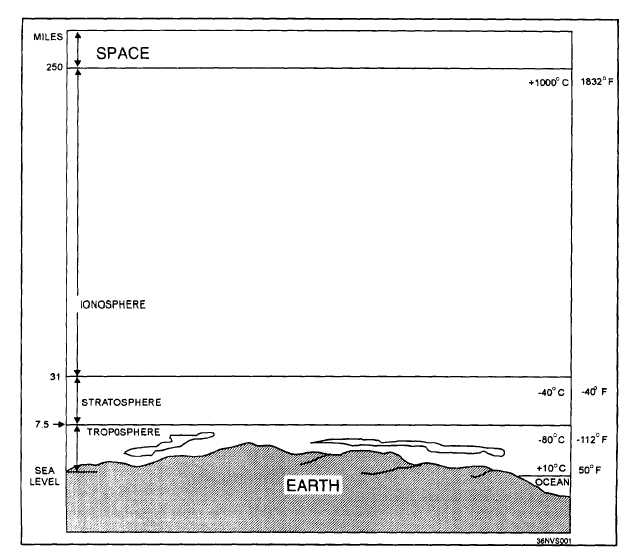Figure 1.1—Atmospheric layers.
since they have the greatest effect on your job. Daily
of the ultraviolet energy that initially set them free
variations in the ionosphere produce four cloud-like
layers of electrically-charged gas atoms called ions,
which enable radio waves to be propagated great
distances around the earth. Ions are formed by a
process called ionization.
Ionization
In ionization, high-energy ultraviolet light waves
from the sun periodically enter the ionosphere, strike
neutral gas atoms, and knock one or more electrons
free from each atom. When the electrons are knocked
free, the atoms become positively charged (positive
ions) and remain in space, along with the negatively-
charged free electrons. The free electrons absorb some
and form an ionized layer.
Since the atmosphere is bombarded by ultraviolet
waves of differing frequencies, several ionized layers
are formed at different altitudes. Ultraviolet waves
of higher frequencies penetrate the most, so they
produce ionized layers in the lower portion of the
ionosphere. Conversely, ultraviolet waves of lower
frequencies penetrate the least, so they form layers
in the upper regions of the ionosphere.
An important factor in determining the density
of these ionized layers is the elevation angle of the
sun. Since this angle changes frequently, the height
and thickness of the ionized layers vary, depending
1-2


